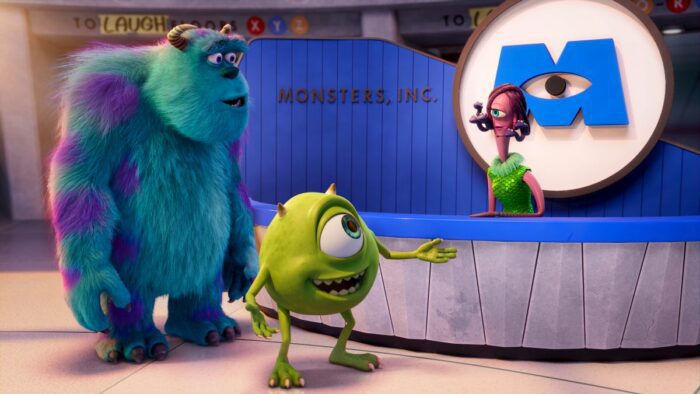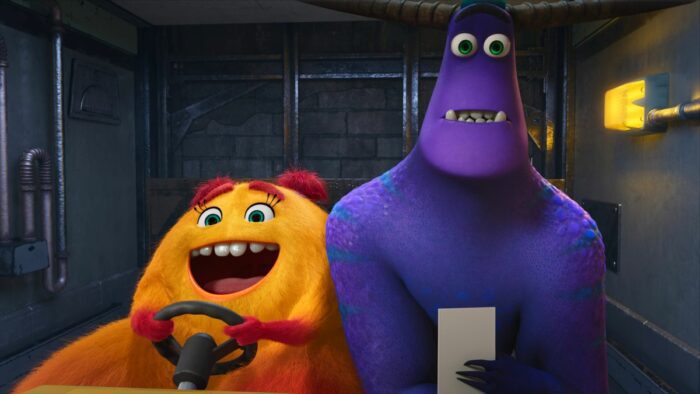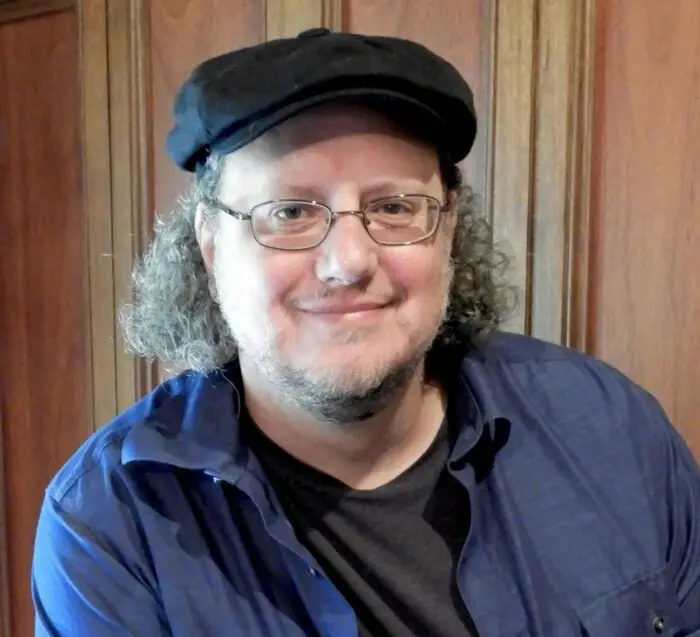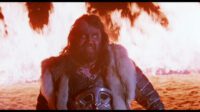Steve Anderson has over 25 years experience working with Walt Disney Animation Studios as an animator, storyboard artist (working on such films such as Tarzan, Wreck-it-Ralph, and Frozen). Prior to joining Disney, Anderson worked as an animator at Hyperion Animation on Rover Dangerfield and Bébé’s Kids. Following Tarzan, Anderson served as story supervisor for The Emperor’s New Groove and Brother Bear. He later directed Meet the Robinsons and co-directed 2011’s Winnie the Pooh. Two years ago, Anderson boarded the Disney/Pixar team of Monsters at Work, a Disney+ series based on the characters of Monsters, Inc. created by Pixar Animation. Anderson served as supervising director of the series which premiered this summer. In this interview, Anderson talks about his love for animation, the new series and why connecting to audiences is what it’s all about.
Jason: Please begin by introducing yourself, and telling us what inspired you to pursue a career working in animation as a writer, artist and director?
Steve Anderson: Growing up I had quite a strict diet of Disney movies, in particular Disney animation, and I have often tried to figure out what it was about those movies that connected with me. And I can’t figure out what it was, but the switch flipped. I loved the aesthetics of them and was super-entertained of course, but they also made me me want to go home and draw, so it inspired me to pursue drawing. I didn’t know why. I just wanted to capture those characters, capture the feeling that I was seeing on screen. So that started my love of cartooning and art and storytelling.
Jason: Were there any particular characters which were an inspiration to you?
Steve Anderson: I think it’s true. At least my brain tells me it’s true, that the first movie that I saw was Snow White and the Seven Dwarfs at a drive-in movie theater, which I had a very visceral reaction to. Looney Tunes was a huge inspiration as well. Hanna-Barbera cartoons, lots of Flintstones, lots of Jetsons. Any kind of animation I could get my eyes wrapped around, I just ate up. Those are some characters that influenced me.
Jason: This is going back a little way, but can you touch upon your work with (the 1992 animated film) Bébé’s Kids?
Steve Anderson: [Laughs] Yes, that was my first job as an animator. It was made by a studio called Hyperion Animation and I had worked on a film called Rover Dangerfield (1991) as an animating assistant from the same company. Tom Wilhite, who used to run Disney Studios in the late ‘70s to early ‘80s, ran Hyperion. On Bébé’s Kids I graduated to animator, and it was special to me to see my first credit. From there I gravitated more towards storyboarding and doing bigger picture stuff; story, directing. That was an important film for me because it was my first shot at being an animator, but it taught me something about myself and where I should focus on myself.
Jason: From Bébé’s Kids, you joined Disney and were part of the team working on Tarzan (1999). What was it like working for Disney the first time?
Steve Anderson: I joined that project in 1995 and I worked on that for three years. I story boarded on that. It was such a great experience. It was a great movie to be my first one at Disney. I’m proud of the work on that movie and really proud of how it came out.
Jason: How long does a movie such as Tarzan take to create and has that time-frame changed over the past 20 years?
Steve Anderson: No, the actual production time in making a movie to create the shots might have changed a little in terms of CGI vs. hand-drawn animation, but the main thing that is consistent is cracking the story and getting the characters and the story right, understanding what the story is about, what the characters are going through, what their journey is. That never gets easier. Whether it’s hand-writing on a legal pad or typing on a word processor or whatever technology you’re using, that’s always the challenge, so some movies take longer because the stories are harder to crack. On some other movies, there may be something story-wise that illuminates itself a bit earlier in the process than others. Tarzan took a while to crack in trying to find the right balance between having him staying in the jungle or going to England and there were different versions of that but we had him stay in the jungle and have him say, ‘no, I belong here’ because the jungle is the fun part. Sometimes it takes a while to find the right balance of all the elements.
Jason: While the technical process hasn’t changed a tremendous amount, has the actual medium of animation changed since the release of Tarzan?
Steve Anderson: Well now, with streaming, there are more avenues to distribute animation to audiences. You have Netflix, which is making Love, Death & Robots which is cool, more adult type of animation. At the same time we’re doing Monsters at Work. There’s still the family audience that’s there, yet it’s great that American animation is breaking through the family aspect. Animation isn’t being limited which is ideal for a medium, which is limitless. It’s exciting to see this becoming much more prominent within the industry.

Jason: After working with various directors for a number of years, you were able to step into the director’s chair with Meet The Robinsons (2007). How did you go about establishing a sense of trust among collaborators?
Steve Anderson: My number one job as a director is to eliminate fear from the room no matter what room that is. My job is to make sure that everybody feels heard and feels safe to contribute. That really comes from honestly listening to people. Of course everybody’s idea can’t be in the movie and everybody understands that yet they just want to be heard. They want to feel safe to say ‘hey, I have an idea’, or ‘I have a solution to this problem’, or even, ‘hey, I think there is a problem here and I have a thought about it’. To be heard, I think, is just what people really want.
Jason: Where do you find inspiration when it comes to character design in storyboarding?
Steve Anderson: Maybe it sounds a little corny or cliché but I think I’m just constantly drawing from what I know and trying to find a connection point to everything I do from something in my life or in my experience whether it’s a person I’ve met or a feeling that I’ve had or themes that are important to me, whatever it might be. In between my projects for Disney Animation, I would hop on other projects to do some storyboarding between directing. For example, I boarded on Wreck-It-Ralph or Frozen and I was an artist given an assignment. I would ask myself, ‘OK, how can I connect to this? How can I relate to these characters? How can I step into this sequence and live inside the skin of these characters?’ Finding that connection point, however, it might manifest itself instead of just doing drawings without feeling which I try to never do that. As Walt Disney used to say, “I’m plussing something”—making it better through my own interpretation of things.
Jason: How might a new animator work their way into a company such as Disney Animation? Would you have advice for that individual?
Steve Anderson: Have a portfolio or an animation reel. The work, of course, is what a company is going to see first, so cultivate work that is character and personality-driven. Someone might nicely animate something with beautiful arcs and timing, but if there’s no heart or personality to it, then they’ll pass. You want to create something where the response is, ‘oh, I see life in that character’s eyes.’ They want to see something that is brimming with personality, life, attitude, and expression. Also, it’s important to prove that you are a collaborator. At Disney, you don’t work in isolation or in a bubble. You might go back to your desk and work on a scene or sequence but you’re going to bring that back to the group where everybody weighs in so being comfortable with collaboration, to give and accept feedback is huge. That’s something to cultivate as a human being in order to work in those circumstances.
Jason: I imagine these qualities and traits were important to you and your team while working on 2011’s feature-length Winnie the Pooh. Can you tell us how that project came to you and what it was like working on such cherished and well-loved characters?
Steve Anderson: John Lasseter who was in charge of the studio offered the project to myself and my co-director Don Hall and I thought, ‘oh, that might be kind of fun but I don’t know that much about Winnie the Pooh,’ or had that much of a connection to him but the more I started digging back into my past I realized I had Winnie the Pooh jammies and I had a Pooh record album I listened to all the time and my family had the books in the living room and suddenly it all came back to me so than I thought, ‘oh this is really important.’ We felt the proper thing to do was to honor the Disney films the studio made back in the ‘60s and ‘70s while also honoring A. A. Milne and E. H. Shepard, the illustrator. So there was a lot of research that we did in the Disney Animation Research Library and we even took a trip to Ashdown Forest which is where Milne and his son, Christopher Robin Milne, used to walk around and come up with the stories of these characters. We wanted to dig into the literary DNA of these stories. We wanted to bring this property to the screen with as much love and care as we could.
Jason: That was a classic Disney property and now you’re working on another Disney Classic, working in the world of Monsters, Inc. and now on the series Monsters at Work featuring members of the original cast (Billy Crystal as Mike and John Goodman as Sulley) along with several new ones (Mindy Kaling as Val Little and Ben Feldmam as Tylor Tuskmon). Do you have the characters designed before the voice actors are chosen or is the other way around?
Steve Anderson: Typically you have some kind of design work done before you cast and that’s very helpful to the actor, even if the design later evolves based on a performance. It’s helpful to them to see within the ballpark of who they’re going to look like in the show. I came onto Monsters at Work after that work had already been done, so they had already set a lot of the voice cast like Ben Feldman, Henry Winkler, Lucas Neff, Alanna Ubach, and Mindy Kaling. It was nice to come into characters that already had a voice and form and sense of who they were, so I was able to dip right in and start playing with these toys that the team had already created.

Jason: At what point was the decision made to release one episode every week, which isn’t the case today with streaming services. It’s funny saying that considering an episode a week is how we were used to watching television growing up.
Steve Anderson: That was a decision made between Disney TV Animation and Disney+, and our show-runner, Bobs Gannaway, who the entire series was his conceptual idea. He wanted to do a sequel series which was new but at the same time is a continuation of stories of our old friends, Mike and Sulley. That was his creative vision of the show. It is episodic yet at the same timer there is an over-arching story we’re telling but each episode has its stand-alone element but you can feel the threads running through each of them. That was something that was important to Bobs.
Jason: It’s like when we were kids and we would wait all week to see our Saturday morning cartoons and I like that’s what this series offers viewers.
Steve Anderson: It’s fun to binge, but it’s also fun to wait. There’s so little in life we have to wait for now. It’s nice to have that anticipation.
Jason: When you’re involved in a project such as Monsters at Work or Frozen and you’re out in the world and you see a child holding a Mike or Sulley doll in the mall or a little girl clutching an Elsa figure in the park what is your emotion reaction to that?
Steve Anderson: That’s the reason we do what we do. It’s connecting to an audience. That’s Disney, that’s animation, that’s anything. I think anybody who does anything creative, it’s connecting to a viewer, to a reader, to an audience member, and that’s the confirmation in our world at Disney Animation for why we do what we do. It’s creating the characters that connect to people. When I was a kid, it was those characters, Snow White, Fred Flintstone, that jumped off a screen and that’s what I wanted to re-live and understand how to create those characters. It’s often too easy to get caught up in studio politics and the stress of making these things all the behind-the-scenes stuff nobody knows about and you forget why we do this. What’s great about taking a trip to Disneyland or the mall is you run face-to-face with the audience and that’s the ultimate validation of everything.
Jason: Do you have any other projects you’re working on?
Steve Anderson: I’m trying to figure out what’s next, but I am looking for a publisher for a book I did that I’m excited about. It’s a Disney history book that takes place between 1966 and 1986 which is between Walt’s death to the Eisner-Katzenberg takeover which was the Disney of my childhood but wasn’t always the sexy, glamorous Disney, it was the Disney-in-transition period which I was always so fascinated with. I’m hoping that can come out sometime within the next year. I have never written a book before, so it’s my first foray into that world.

Jason: This sounds like an era worth exploring; the Disney years between the classic animation and The Little Mermaid, Beauty and the Beast timeframe. The Disney renaissance if you will.
Steve Anderson: The fun thing now with Disney+ is a lot of those quirky Kurt Russell comedies from the ‘70s that not many people have seen or had access to are there now the book can help introduce people to that time period that’s not covered a lot in the Disney history books.
Jason: I look forward to that. Is there anything else you wish to add?
Steve Anderson: I’ll just add how proud I am of Monsters at Work and how much I loved the team and the experience of doing it which was a fantastic two years of my career and thanks to all my collaborators and I hope everybody loves it as much as we did.
Monsters at Work from Disney Animation Studios is now available on Disney+.
If you enjoyed this interview, be sure to check out some of our others!
Interview: Zach Seman and Roger Kleinman on Scoring Kenny Scharf: When Worlds Collide
Interview: Anne-Sophie Versnaeyen on Scoring OSS 117: From Africa with Love


